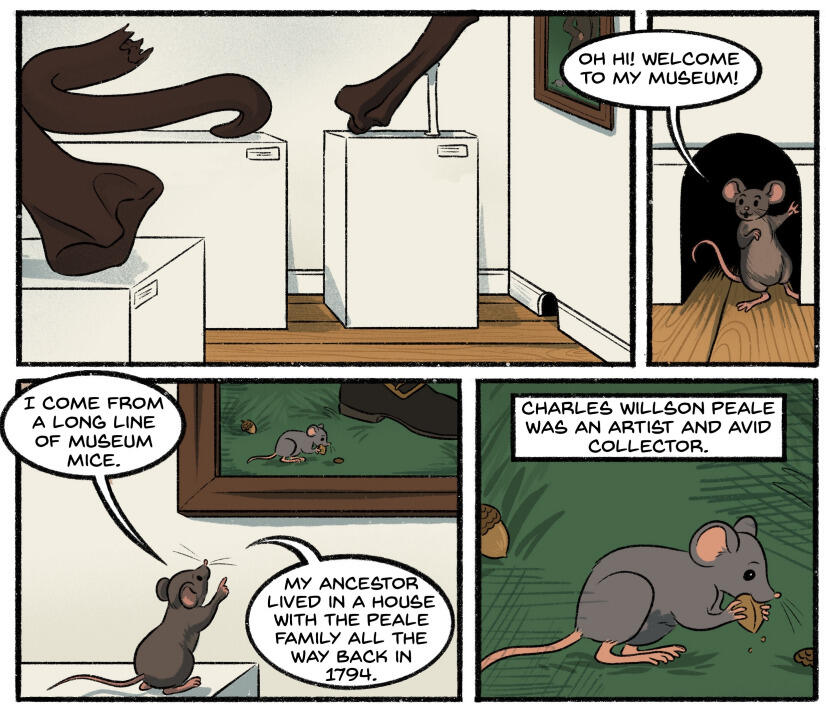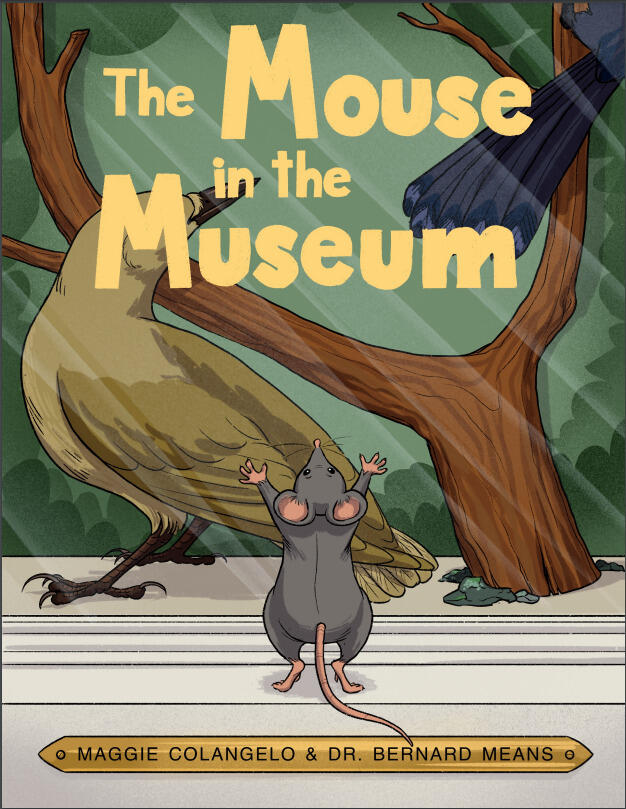
March 14, 2024
VCU professor uses 3D to bring life – and accessibility – to upcoming museum exhibit
Share this story
Museums have long been places of reverence with one defining credo: Look, but don’t touch. But for one Virginia Commonwealth University professor, the mission is to turn the sacrosanct into something more approachable.
Bernard Means, Ph.D., a teaching associate professor of anthropology in the School of World Studies in the College of Humanities and Sciences, directs the Virtual Curation Laboratory, where he and his students create 3D digital models of historical, archaeological and paleontological objects. The lab is a maze of unique pieces, from re-created archaeological findings to a copy of a human-sized mastodon tusk.
For one ongoing project, the team has 3D-scanned and replicated mastodon fossils, some of which belonged to Benjamin Franklin and others that were excavated by 18th-century naturalist and painter Charles Willson Peale. The Peale, a historic museum in Baltimore, will display the fossils in an accessible exhibit for individuals who are blind or have vision impairment.
Means was approached by a curator who works with the museum to develop an exhibit around the “Founding Monsters” comic, which the lab published in 2021. The comic, the lab’s first, tells the story of the nation’s Founding Fathers and their obsession with prehistoric megafauna such as mastodons, an obsession Peale shared.
The exhibit, which is slated to open in May, will have a strong tactile component, with items replicated through 3D printing as well as audio elements. Sculptures based on scenes in the comic were created for the exhibit by Anna Carter, a senior anthropology major in the School of World Studies, and then 3D-scanned and printed.
To supplement the exhibit, Means and graphic artist Maggie Colangelo, who received bachelor’s degrees in communication arts and environmental studies from VCU in 2022, collaborated on a new comic book, “The Mouse in the Museum,” which details the history of the original Peale museum in Philadelphia and many of its artifacts.
“Comics are incredibly accessible,” said Colangelo, describing comics as easy to read, easy to digest and available for a wide audience. “They’re useful in that children are more likely to want to read them.”
Colangelo and Means have now created five comics together, all of which were created with the idea of fitting into a teacher’s classroom curriculum. All of the comics are available to download online.
In “Founding Monsters,” their first comic, “we make sure the Revolutionary War is mentioned, and we make sure that George Washington, Thomas Jefferson and Ben Franklin are in there,” Means said. “It’s a way of making the information that’s more accessible than a lot of the more scholarly resources.”

When Colangelo illustrated their newest 14-page comic, she drew on real-life references to shape the story. Even the titular mouse is inspired by a piece of Peale’s original collection, which exhibited a mouse skeleton alongside a mastodon skeleton, the museum’s pride and joy, for scale.
“It was sort of a joke but also to contrast the size,” Colangelo said. “I thought it would be good to have a mouse’s perspective on the museum.”
The story follows a mouse residing in The Peale. She descends from a long line of museum mice, including a great-grandmother who lived in the Philadelphia home of Peale, an artist and collector who transformed his personal gallery into a public museum. A sister museum was established in 1814 in Baltimore by Peale’s son, Rembrandt Peale, and is today known as The Peale.
Subtle hints to the Philadelphia museum’s history are included on every page. In one panel, a bear takes a swipe at a cringing monkey; in real life, a monkey housed in Peale’s collection lost an arm to a bear. Two bears were kept in the collection – but after one made a breakout attempt and got into the house, Peale had both taxidermied and put back on display.
For Colangelo, including those details can be one of the most fun parts of her work.
“For anybody who knows that part, and it’s not an unknown part for people to study, we’ll be able to point that out in the guide,” she said.
For these nods to historical events, the research is extensive. On the page where the bear breaks into the house, several Peale family members can be seen standing around, wondering what to do, which required Colangelo to cross-reference the year the bear broke into the house with the years of birth for Peale’s numerous kids.
“He had three wives and a lot of children,” she said. “So I had to go through and be like, ‘OK, who was alive at this point? Who was the baby right now? Who was there?’”
The attention to detail extends to the clothing worn by people featured in the comic, the architecture of the buildings and the animals in Peale’s menagerie.
“We try to make sure that the research is correct,” Means said. “So even though it’s a mouse telling the story, it’s all based on real things.”
Subscribe to VCU News
Subscribe to VCU News at newsletter.vcu.edu and receive a selection of stories, videos, photos, news clips and event listings in your inbox.



